
The Moms Group is now online

syəcəb

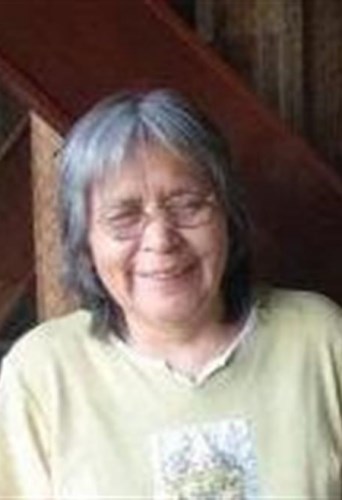
February 2, 1951 – August 2, 2020
Janet was an enrolled member of The Tulalip Tribes. After graduating from Marysville High School, Janet enjoyed learning the Culinary Arts. This was where she blended her love for food with the love of her people as she prepared meals for many, many people when she opened a food stand at Tulalip’s Boom City. For many years, Janet shared her infectious smile and fun-loving sense of humor across Tulalip. She fostered children when she could as her door was always open. She worked as a Table Games Dealer at the Tulalip Casino. She worked for bedachelh and she worked as a CHR Driver. Janet mentored many people and offered as much as she could if someone were in need. She spent numerous years on the Election Committee ensuring that everything was completed when the time came. She had quite a group of friends on that committee and cared deeply for all of them.
Janet’s family life was spent with her mate Charles R. Sneatlum Jr. and their two sons Charles III and Edward. She especially enjoyed her time with her special in-laws at the Muckleshoot Reservation. She enjoyed planning family reunions and, just as much, honoring the family history and culture by preserving as much information and teachings with her younger family members and other members of her family and the community.
Janet is survived by her son Charles R. Williams III (Jenny) and Timothy Jones, her siblings Arthur H. Williams, Thelma J. Williams (Cyrus), Marsha Judi Patrick, special son Francis Williams Sr., nineteen grandchildren, two great grandchildren and two dogs. She is also survived by her favorite nephew Jobey Tom Williams and favorite niece Valene Comenout. Janet also is survived by numerous nieces, nephews, her special Mamason Carolyn Moses, and her caregiver Raetta Zackuse. Preceding her on her journey were her parents Wesley and Joyce Patrick, her mate Charles R. Sneatlum Jr., her son Edward King George Sneatlum, her uncle Amos A. Bob, her siblings Leonard Abner Van Pelt, Daniel Lee Patrick, Emeline Sally Patrick, her grandson Michael Sneatlum, her nieces Cheryl Bagley and Justine Comenout.
Janet’s family had a private Interfaith Service at one of the family homes on August 5, 2020. Visitation was held at Shaefer ShipmanFuneral Home on August 6, 2020 with burial at Mission Beach Cemetery at Tulalip, WA.
Please use the following link to download the August 8, 2020 issue of the syəcəb
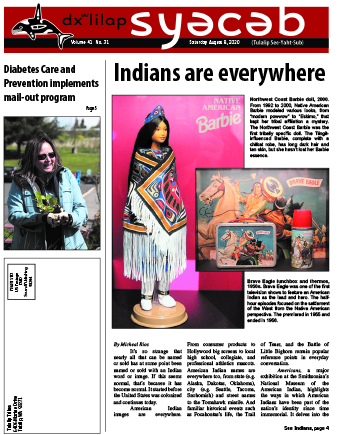
Submitted by Lindsey Watkins, Marketing Manager, Tulalip Tribes
Beginning August 10, if you have not completed your census survey, a census enumerator will visit your home to ensure that you and your family are counted. Census enumerators are your neighbors–people from your community, hired by the Census Bureau, to go door-to-door and collect census information from residents that have not completed their 2020 Census. Census enumerators can be identified by ID cards displayed openly, their official Census bag, and are likely members of your community, so welcome them when they arrive—the whole process should not take more than 10 minutes. The census taker or field representative will present an ID badge that includes their name, their photograph, a Department of Commerce watermark, and the expiration date. They will have an official bag and Census Bureau-issued electronic device, such as a laptop or smartphone, bearing the Census Bureau logo. Census takers and field representatives will conduct their work between the hours of 9 am and 9 pm.
If a census enumerator comes to your door, they will interview you so they can count all the residents of each household. They will ask you approximately ten questions on their electronic form and fill in your answers. Even if you just forgot to complete your form, the census taker still must ask you the questions and complete the form with your answers. They cannot let you fill out their form for them. They will be wearing a face mask and staying outside your door following CDC guidelines and not ask to come into your home.
They will not ask for your social security number, and your information is confidential and can’t be shared with anyone outside of the Census Bureau, including law enforcement. If no one is home at the time of the visit, the census enumerator will leave helpful follow-up information to make sure your household is counted.
Remember, this is your chance to make sure Indian Country is accurately counted. Funding for schools, roads, health clinics, and other facilities depends on it. An accurate count may trigger reapportionment, ensuring we are properly represented in Congress. An accurate count gets Tulalip a fair share of grants and other funding; it makes sure your share does not go to neighboring cities or towns. For everyone who is not counted, the Tulalip community could lose approximately $3,000 per person, per year, for the next ten years!
Currently, the Tulalip Census self-response percentage rate is about 10% lower than the rate for Washington State. If you have not already done so, you can avoid having a Census Taker come to your household by responding now online at 2020census.gov, by phone at 844-330-2020, or by mail if you complete and return a Census questionnaire that was mailed to your home.

By Micheal Rios, Tulalip News
It’s so strange that nearly all that can be named or sold has at some point been named or sold with an Indian word or image. If this seems normal, that’s because it has become normal. It started before the United States was colonized and continues today.
American Indian images are everywhere. From consumer products to Hollywood big screens to local high school, collegiate, and professional athletics mascots. American Indian names are everywhere too, from state (e.g. Alaska, Dakotas, Oklahoma), city (e.g. Seattle, Tacoma, Snohomish) and street names to the Tomahawk missile. And familiar historical events such as Pocahontas’s life, the Trail of Tears, and the Battle of Little Bighorn remain popular reference points in everyday conversation.
Americans, a major exhibition at the Smithsonian’s National Museum of the American Indian, highlights the ways in which American Indians have been part of the nation’s identity since time immemorial. It delves into the power of story, surrounds visitors with images, and invites them to begin a conversation about why this phenomenon exists.

The images accompanying this article are worth a closer look. What if they are not trivial? What if they are instead symbols of great power? What if the stories they tell reveal a buried history and a country forever fascinated, conflicted, and shaped by its relationship with American Indians? Pervasive, powerful, at times demeaning, the images, names, and stories reveal how we have been embedded in unexpected ways in the history, pop culture, and identity of the United States.

As American Indians, we are estimated to comprise just 1% of the entire U.S. population. Yet everywhere you go in the United States, you can see images of us. Why?
How is that Indians can be so present and so absent in American life? One reason is that the land of the free and home of the brave is still trying to come to grips with centuries of wildly mixed feelings about us. Are we the merciless Indian savages described in the Declaration of Independence or are we the noble Indians who strive to be stewards of the Earth? Domestic dependents granted special privileges by the U.S. government or sovereign nations free to govern ourselves? The answer to both questions is somewhere between nether and both.

We have been seen as both authentic and threatening, almost mythological yet deeply appealing. In present day America, citizens of all cultural backgrounds can surround themselves with dream catchers, have Pendleton accessories, and describe a football game as a trail of tears because they know that Indians are in the country’s DNA. They know we have shaped this nation from the beginning and have convinced themselves that the best way to honor us is by filling the void left by cultural genocide with cultural appropriation.

The objects, images, and stories shown here are not just what they seem to be at the surface level. They are insistent reminders of larger truths and an empathic refusal to forget our shared history.
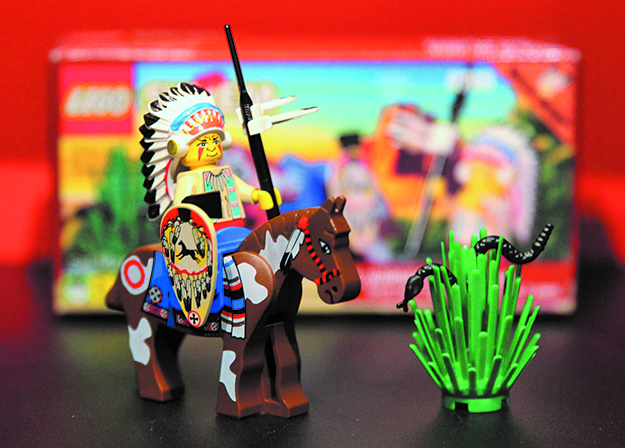

June 23, 1948 – July 28, 2020
Darlene was born in Seattle and grew up in various places in Washington State, where she graduated from Snohomish High School and met the love of her life in her junior year.
She married on August 19, 1967 to Harold Wolfer in Snohomish, WA. Their love was so strong they married two more times; one on their 25th wedding anniversary in 1992 and again in 2008, when they changed their last name to Taylor.
She was a housewife, mother, a grandmother, a driver for a children’s transportation company, and went to school for her medical assistant certificate. She also held a few positions at the Tulalip casino before her retirement.
Darlene loved children and helping others. She and Harold fostered five children over the years and adopted an additional one. She also became very close friends with the woman she took care of in her last job as a caregiver.
She touched a lot of hearts in her lifetime with her kindness and generosity and will be greatly missed by all those that love her.
She is survived by her husband: Harold (Wolfer) Taylor, son: James Wolfer, daughter: Natialene Schopf, granddaughters: Ashley Schopf and Brittney (Ian) Martens, sister: Lois Satterthwaite, brother: William Harris, sister in law: Elaine Reed, best friend: Paula Lauderback, neighbors: John and Veronica Campbell, as well as many others; including sisters and brothers in law, nieces, and nephews, and all of her fur babies.
She was preceded in death by her father: James L. Harris, mother: Velda Dunlap, step mothers: Pam Malm and Jane Harris, father in laws: John Wolfer and Dallas Taylor, mother in law: Margie Fitchen, brothers: ErnieReed and Royce Harris, sister in law: Fay Harris, brothers in law: Gary Fitchen, Glenn Losey, Walter Taylor; along with fur babies: Pedro, Peanut, Sam, Prince and many others.
Services will commence on Friday August 7, 2020 as follows:
Visitation:
Schaefer-Shipman Funeral Home in Marysville from 8:30-10am.
The Graveside Service:
Mission BeachCemetery in Tulalip at 11am.
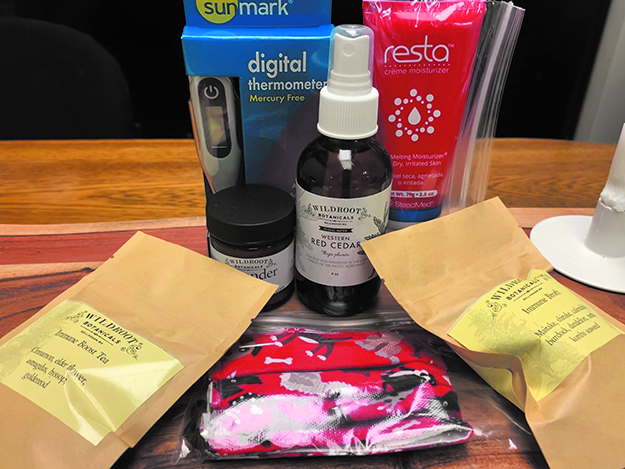
By Kalvin Valdillez, Tulalip News
When the Tulalip Tribes issued their Stay Home, Stay Safe mandate and the governmental entity placed many of its programs on hold and staff on furlough, due to the coronavirus, the Diabetes Care and Prevention program was among the few that momentarily halted all services.
“One of the things you hear on the news is about the people who are at high-risk of contracting the virus, and they always mention diabetes,” said Veronica ‘Roni’ Leahy, Diabetes Care and Prevention Program Coordinator. “I started thinking about what was happening with our patients, what they must be going through, how they are feeling. They must be worried and scared.”
Although there has been a general decrease in the total number of Indigenous people diagnosed with the disease over recent years, Native communities still have an alarmingly high amount of people who are diabetics and pre-diabetics in comparison to any other race nationally.
Diabetes, whether Type 1 or Type 2, is a complex disease that unfortunately, due to deviating from our traditional diets and the lack of access to healthy foods, has affected many of our loved ones and altered the way they live. Managing diabetes is not exactly a walk in the park, considering the amount of medication and insulin one must take in order to just eat a meal. If you are a diabetic and miscalculate the amount of insulin you need to take, or eat too much or too little, you can potentially be in life-threating danger if your blood sugar spikes or drops dramatically.
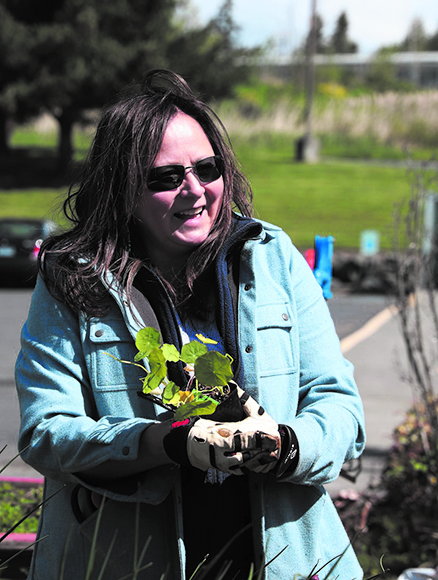
With the health of her patients in mind, Roni pleaded with management at the Tulalip Health Clinic, asking for clearance to come back and figure out a way to reach those patients living with diabetes. Receiving the okay to return, Roni immediately got to work by calling and checking-in on those diabetics who receive care through the program. Able to reach 121 out of 225 patients, Roni asked them a series of questions to get an understanding of how they were doing and what services they required amid the COVID outbreak.
Like many Tribal programs and departments, the Diabetes Care and Prevention program was gearing up for an exciting 2020, aiming to reach more of the community who have been diagnosed with pre-diabetes by planning classes, field trips and a number of fun projects including a fitness expo, complete with exercise workshops and activities, in partnership with Youth Services. With those plans no longer in-play, Roni had to readjust her approach to reach those who needed the program’s resources and services.
“Every month we send the patients a mailer to their homes; something that can provide them with information about COVID,” she explained. “The first one we sent had a thermometer, information on COVID-19 and safety guidelines. This way they know wearing masks are important; we sent them one set and in the next mail-out they’ll get another set of masks.”
In addition to reliable information, Roni is also making sure her patients have the necessary equipment to monitor their health, including blood pressure monitors, thermometers, spirometers and fingertip oximeters, in order to accurately report to their doctors during scheduled telehealth appointments. The program has also been working with other departments within the tribal health clinic that provides services to their diabetic clients. For example, optometry provided Roni with eye health information handouts and eye drops, while the in-house physical therapist offered resistance bands and exercises, so the diabetics can stay active safely from the comforts of their homes.
The mail-out program is a monthly initiative to help those living with diabetes navigate through these corona-times safely. The Diabetes Program also assembles themed-care packages that are sent to their clients quarterly. Last quarter, those diabetics who live on the reservation received a cold care package, filled with immune boosting essentials, at their doorstep. The care packages are hand-delivered by the Diabetes Program Admin Assistant, Brooke Morrison. And for those diabetics who do not live on the reservation, they are able to scoop one up at any time from the health clinic. The next care package will be a naturopathic kit.
During Roni’s telephone assessment, she asks the patient if an emergency situation occurred, do they feel comfortable calling the clinic or the medics, whether it was a diabetic or corona related issue. Many of those patients voiced concern.
“I want them to know that if they have worries or anxieties about calling the office for care because they’re afraid of getting sick, they can call us. A lot of people don’t want to call because they are afraid they’ll have to go to the hospital, and if they go to the hospital their family can’t be with them. That’s part of the conversation I have with them and let them know that you can talk to our nurses, to our clinic and they can help you. Maybe you don’t have to go to the hospital, but you do need to call somebody.”
When reaching out to her patients, Roni quickly learned that a phone call goes a long way. In fact, she recalled numerous phone conversations that resulted in tears. Many of her clients expressed fear about the uncertainty surrounding the coronavirus, as well as loneliness caused by isolation. Roni shared that one gentleman told her that she was actually the first person to call and check on him since the pandemic began.
“We’re keeping really busy with diabetes education that keeps people active and on track with social distancing and keeping things sanitized. Our biggest concern is their safety and we want them to know that we’re here for them,” Roni expressed. “When it comes to diabetic care, sometimes it can be a lonely walk and filled with a lot of uncertainty. We want them to understand that they’re not alone. The mail-out program is a great way to keep interacting with our patients. One of the things people enjoy about our classes is that connection of being together as a group, so we still need to keep those relationships alive and growing and we do that by making sure they have everything they need at home.”
For more information, please contact the Tulalip Diabetes Care and Prevention Program at (360) 716-5641.

Please use the following link to download the August 1, 2020 issue of the syəcəb

